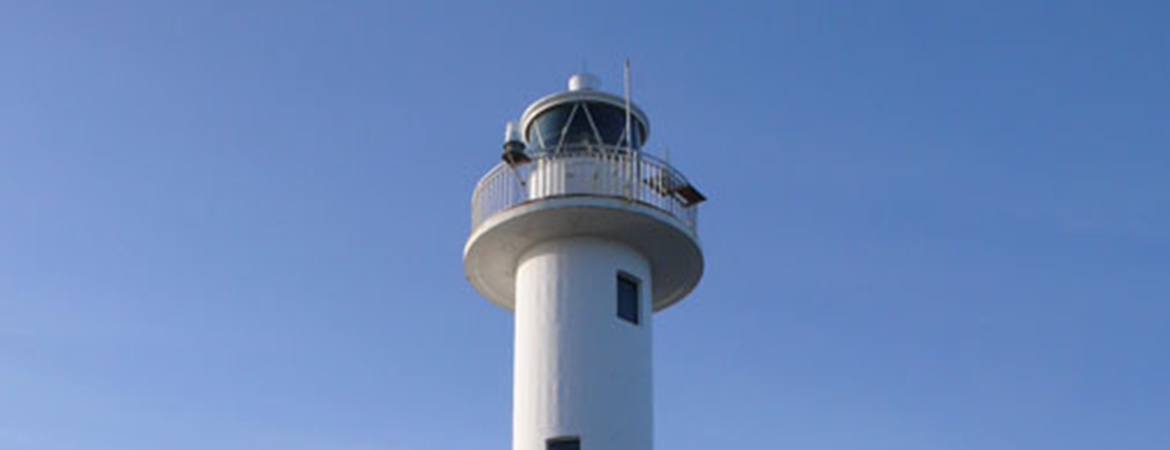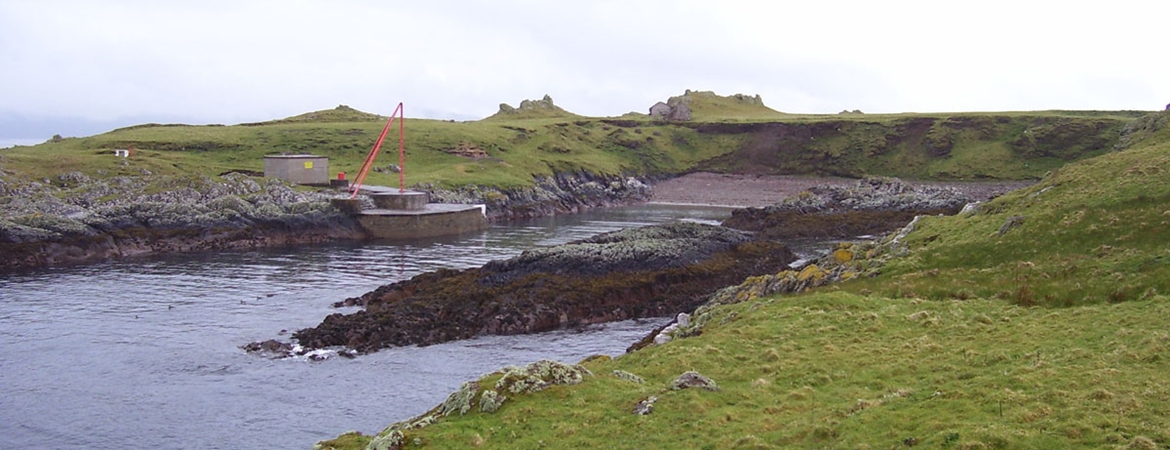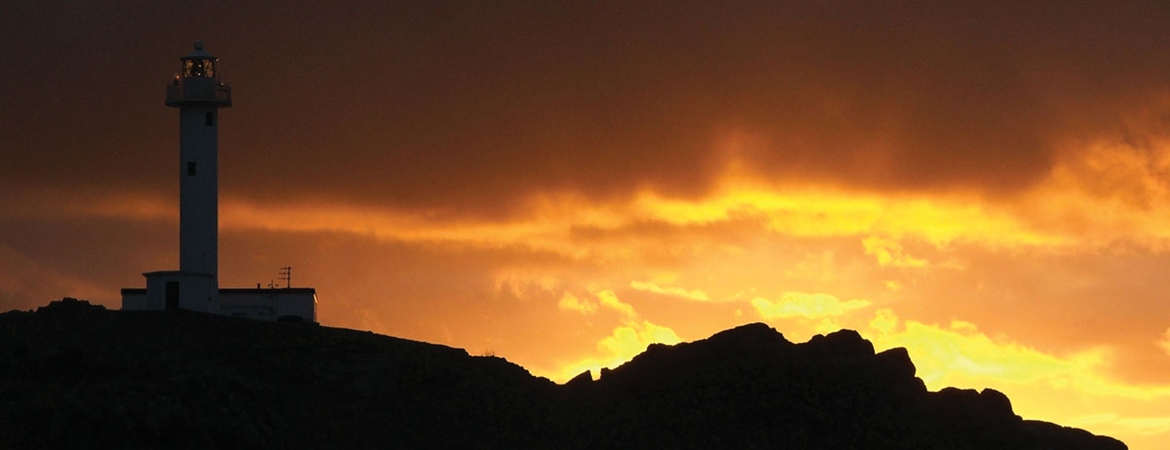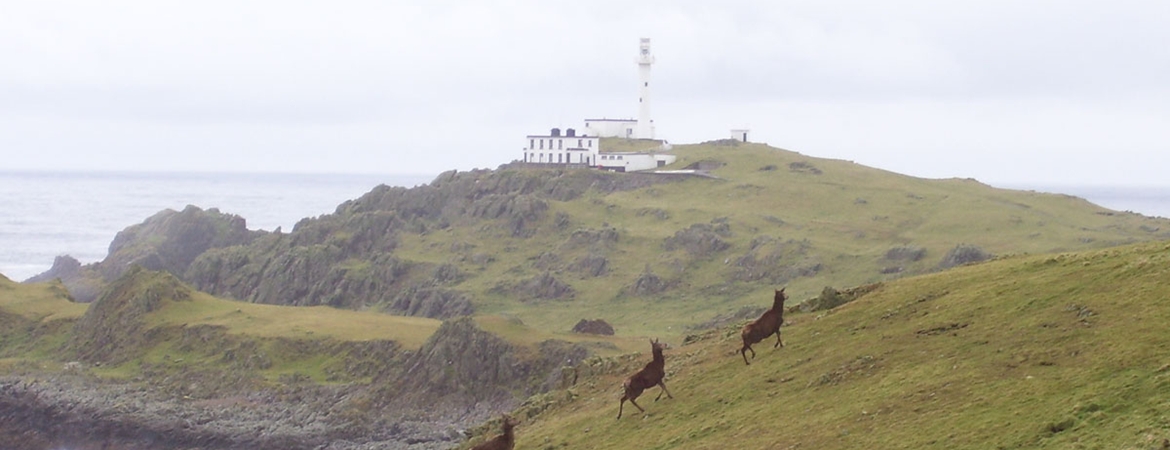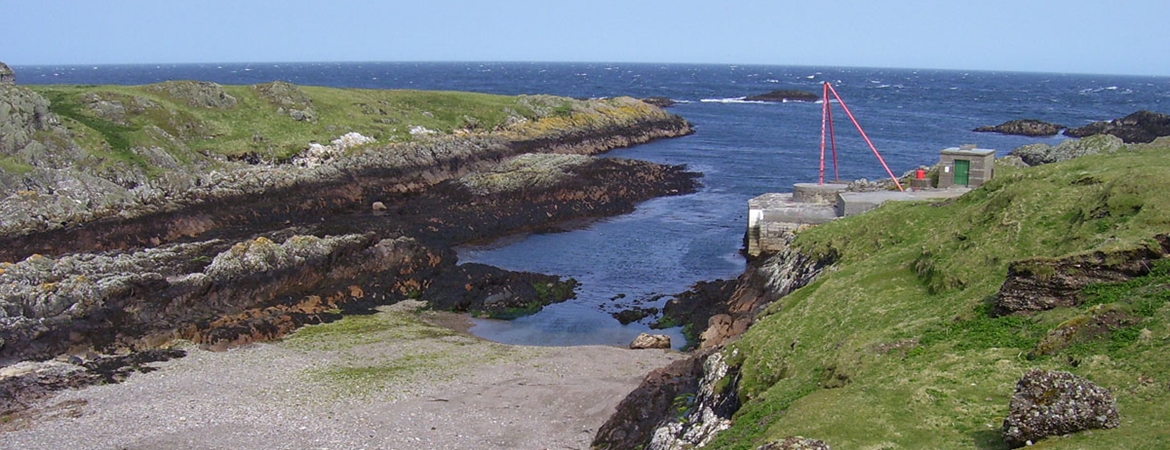Inishtrahull is an island about one mile long lying six miles north of Malin Head. Inishtrahull Lighthouse is the most northerly Irish lighthouse. Together with the light on Tory Island it forms one of the two main landfall lights for shipping from the Atlantic rounding the north coast of Ireland and, in addition, provides a guiding light to coastal shipping and fishing vessels.
The first lighthouse on Inishtrahull was built at the east end of the island in 1812, largely because ships of the British Navy had begun to use Lough Foyle. It was designed by George Halpin senior, Inspector Works & Inspector of Lighthouses to the Corporation for Preserving and Improving the Port of Dublin (usually referred to as the Ballast Board), and was first lit on 17 March 1813. The tower's overall height was approximately 12.8m and the focal plane of the light 10.5m above high water.
In 1861 Inspector Halpin wanted to replace the reflectors with a first order dioptric apparatus in a new lantern and tower. The Board of Trade objected to a new tower but agreement was reached in July 1862 to erecting a new lantern and apparatus on the existing tower. Messrs Edmundson of Dublin supplied the lantern, lantern floor, spiral stairs, and balcony, all made of cast iron, and Messrs Chance Brothers of Birmingham supplied the first order revolving dioptric apparatus with a wick burner. A temporary light was set up in June 1864 and the new light came into operation on 29 September 1864 with a character of one flash every two minutes. This was changed to one flash every minute early in 1873 only to find later in 1873 that this character was the same as that of Skerryvore, 98km (61 miles) to the north, off the Scottish coast. A further change was made on 1 March 1874 to one flash every 30 seconds.
In 1904 the wick burner was replaced by an incandescent paraffin burner, which gave the light beam a candlepower of 396,000.
At the beginning of the 20th century it was decided that a fog signal was required in the vicinity of Malin Head. After a good deal of discussion a fog signal station was constructed at the west end of Inishtrahull and in 1905 a siren fog signal came into operation. There were, therefore, two separate establishments on the island.
In 1952 the Commissioners of Irish Lights decided to replace the fog signal machinery, and to modernise the lighthouse. They decided that the best way to do so would be to build a new lighthouse beside the fog signal station at the west end of the island and to abandon the lighthouse at the east end, where the Keepers' dwellings were in need of extensive repair.
The new tower, which is of reinforced concrete, is 23m high to the balcony, and 2m diameter inside. It was designed by the Commissioners' staff and constructed during September and October 1957 by Collen Brothers Limited, Dublin, in the exceptionally short time of six weeks.
The lantern, lighting equipment and fog signal was delivered to the island on 16 July 1958 and by the end of the month the lantern, which is 19 feet high and weighs almost 4 tons, had been erected on top of the tower.
The light had an elevation of 59m above sea level and consisted of eight 1,000 watt, 100 volt, lighthouse lamps in polished aluminium reflectors, two in each beam. The four beams rotated, showing a flash once every 20 seconds. The light was 1,750,000 candlepower with a range of over 30 miles in clear weather but, owing to the curvature of the earth, its geographical range was 20 miles. The character of the light was flashing white every 20 seconds.
The lantern was of novel design in that the diaphone fog signal was incorporated in the structure above the light. The fog horn was of the radial flow type which resembled two saucers placed base to base. This type of horn gave an all round signal of equal intensity, and was the first of its type to be put into operation in Ireland. The fog signal was powered by compressed air supplied by one of two 34 h.p. Ruston Hornsby diesel compressor plants in the adjacent engine room. Two 16.5 KVA diesel alternator sets also in the engine room produced electric current both for the main navigation light and for domestic use.
The new station was inaugurated on 8 October 1958 and the light at the west end of the island was discontinued the same day. In May 1959 it was found that the new light was obscured behind the old tower on a bearing of 258° (T) to a distance of 8 miles. During the summer of 1959 the old tower was demolished making the light visible all around the horizon except where it is obscured by high ground between bearings 256° and 261° to a distance of 2½ miles.
The fog signal was changed from siren to diaphone on 8 October 1959 with a character of 2 blasts every 60 seconds. In 1986 this diaphone signal was replaced by an electric fog signal with the same character. The fog signal at Inishtrahull was permanently disestablished on 1 May 1987.
A radar transponder beacon (Racon) was established at Inishtrahull Lighthouse on 2 February 1970.
Plans to automate the lighthouse commenced in 1985. The 1958 optic was not suitable for automation and the existing character of the light did not comply with the recommendations of the International Association of Lighthouse Authorities (IALA). It was replaced by a 375mm cut and polished glass six panel optic mounted on a revolving pedestal with a gearless drive, with two 1000W electric lamps (one in use and one standby) in a lampchanger. The new character was three white flashes every 15 seconds, with an intensity of 760,000 candelas and a range of 25 nautical miles. Two emergency lanterns having the same character but a reduced range of 7 nautical miles were mounted on the balcony rails for use in the event of the failure of both the main and standby lights. Since 1978 the light has been exhibited during poor visibility in daylight hours.
A temporary light was set up in July 1986 while the new equipment was being installed.
Automation was completed in March 1987 and the last three Lightkeepers, accompanied by the Inspector of Lights and Marine Superintendent, left the station at 1200 on 30 April 1987 and the station became unwatched.
Inishtrahull Lighthouse was converted to solar power on the 20 September 2000. The light is a Pharos 350mm lens with a PRB22 rotating pedestal and electric 35W discharge lamps powered by two banks of 18 x 50W solar panels linked to two 24V 2,750 Ah batteries. The character remains the same but the range was reduced to 19 nautical miles. This light is exhibited during hours of darkness and in conditions of reduced visibility.

